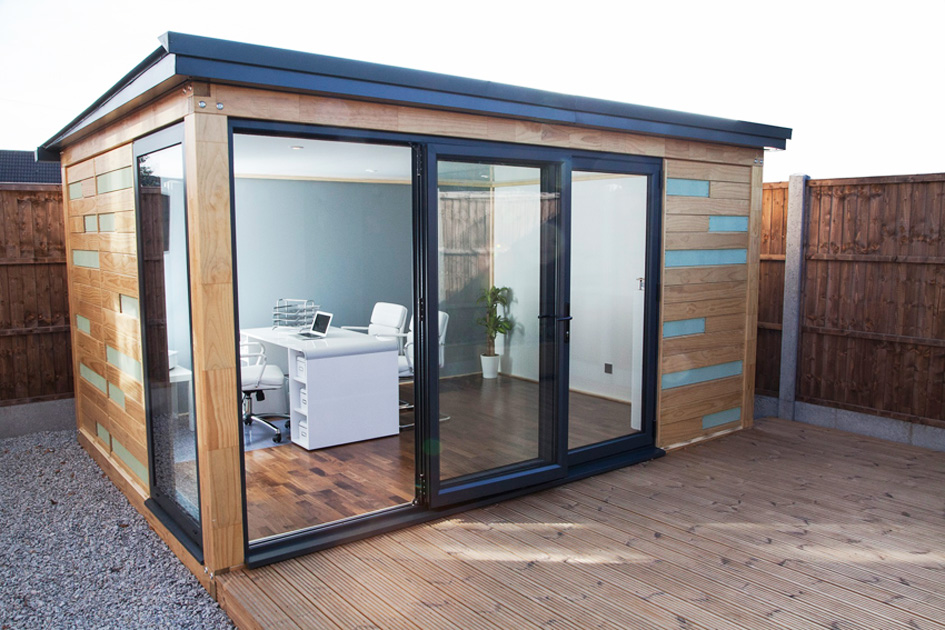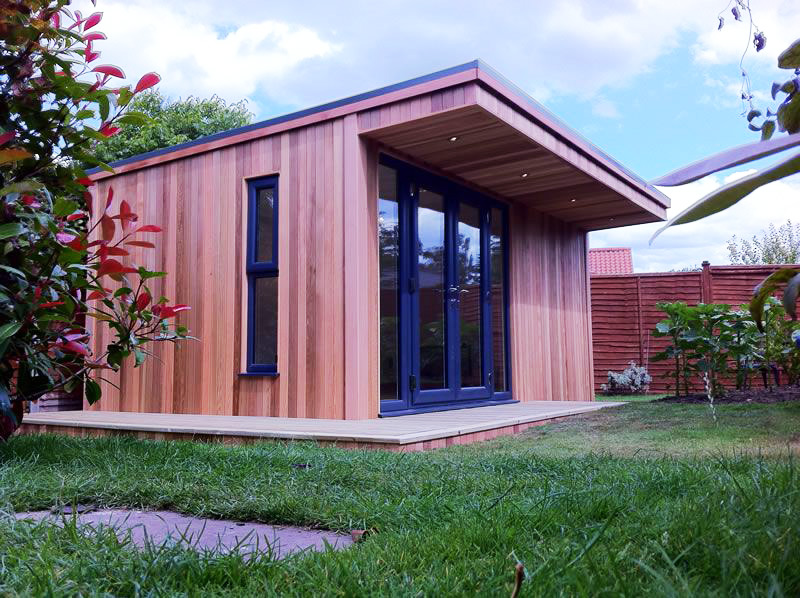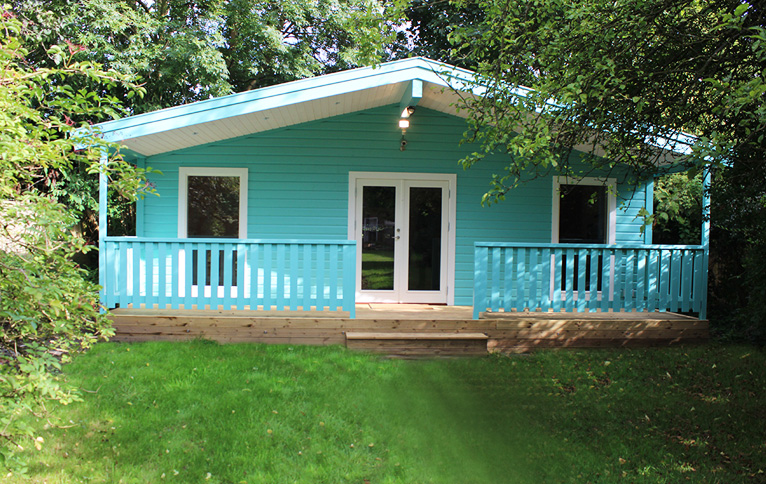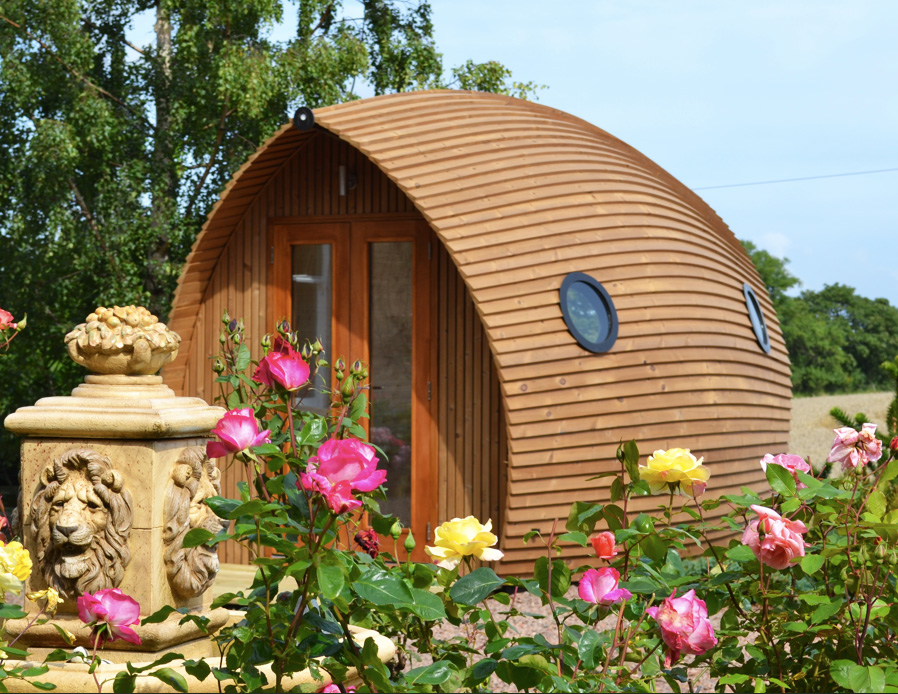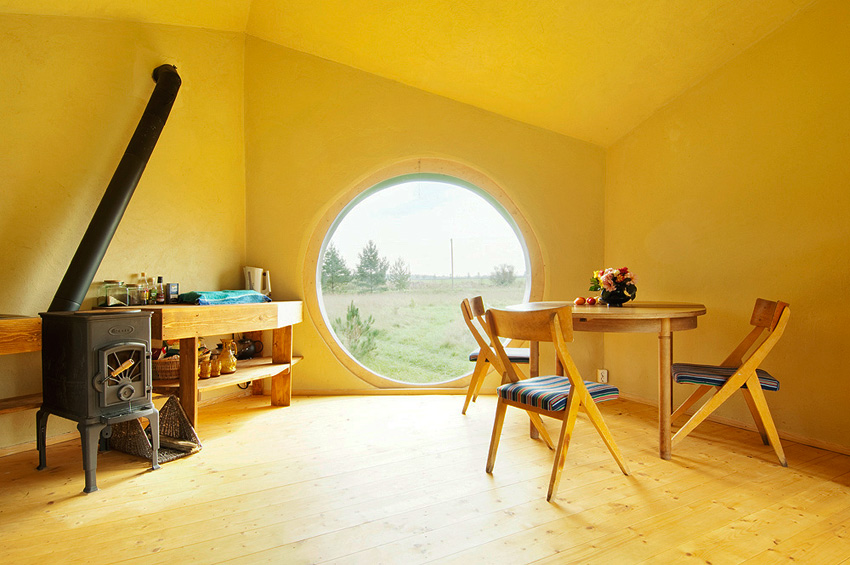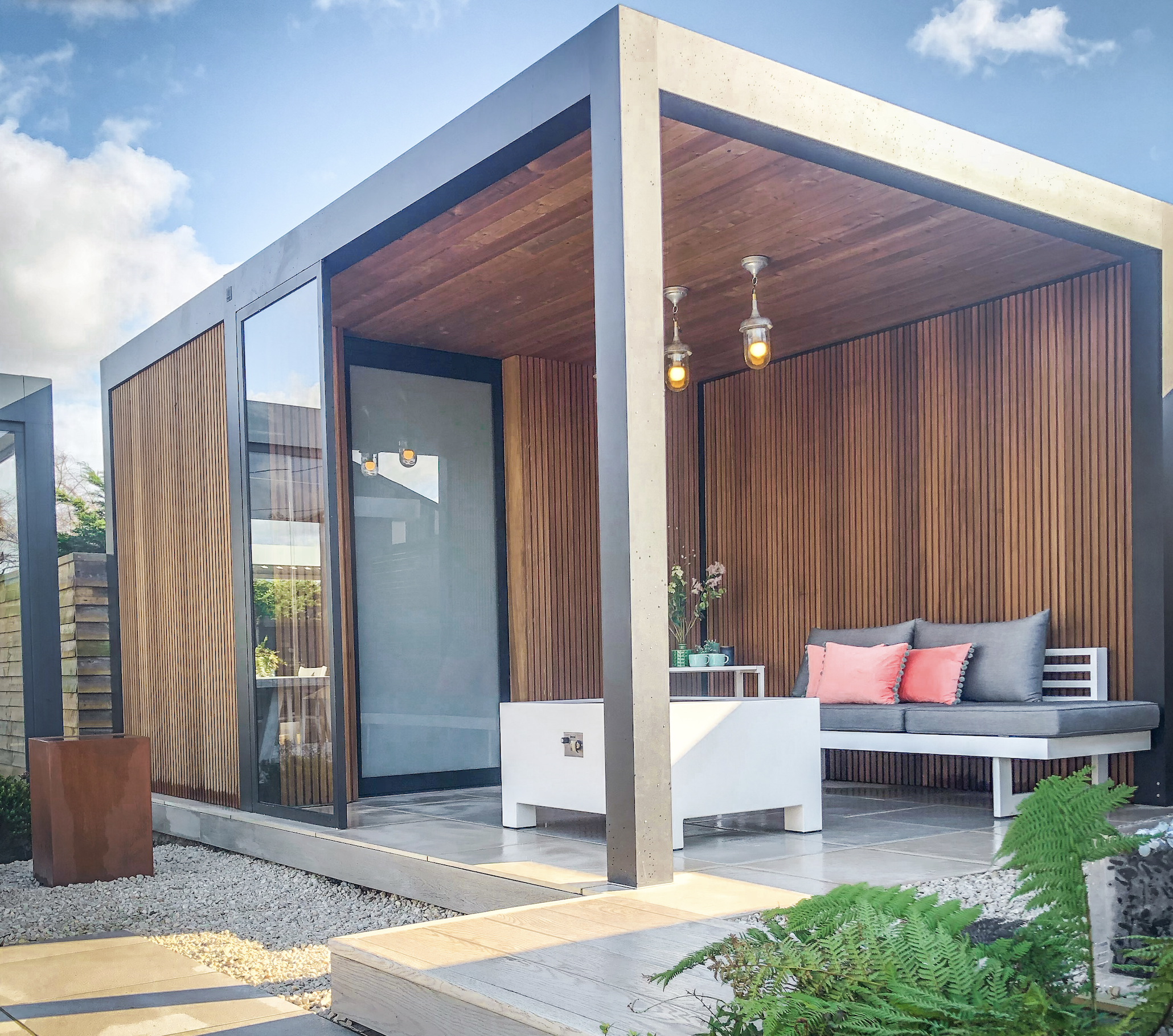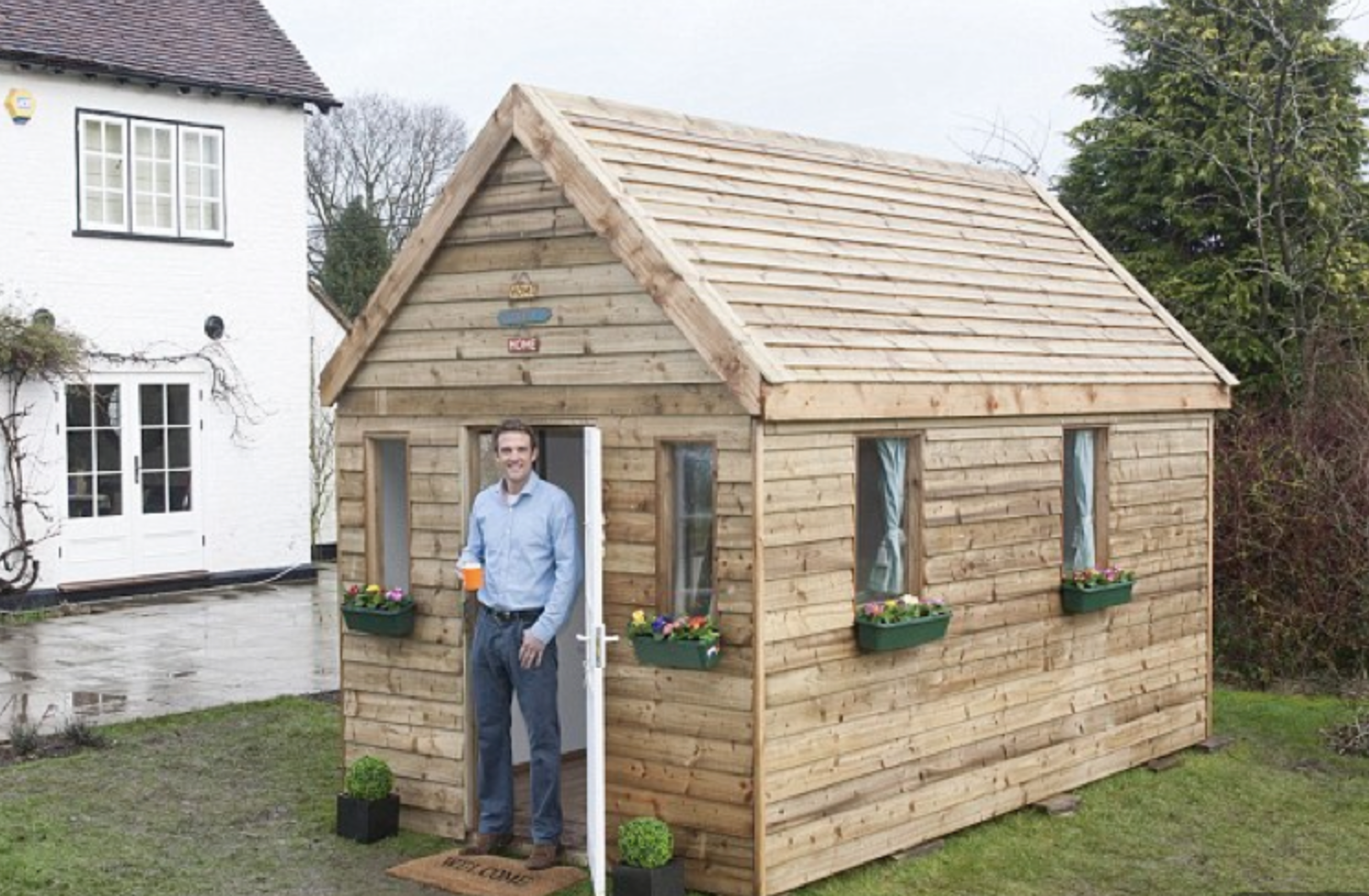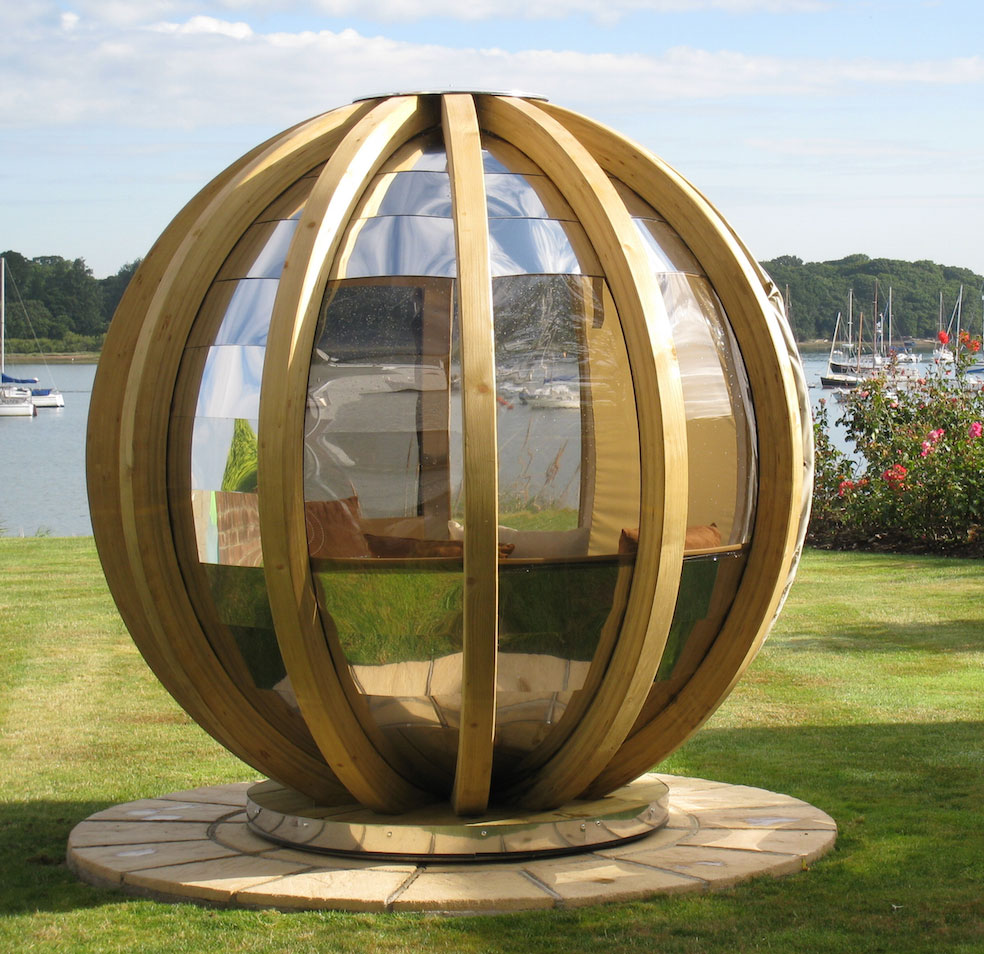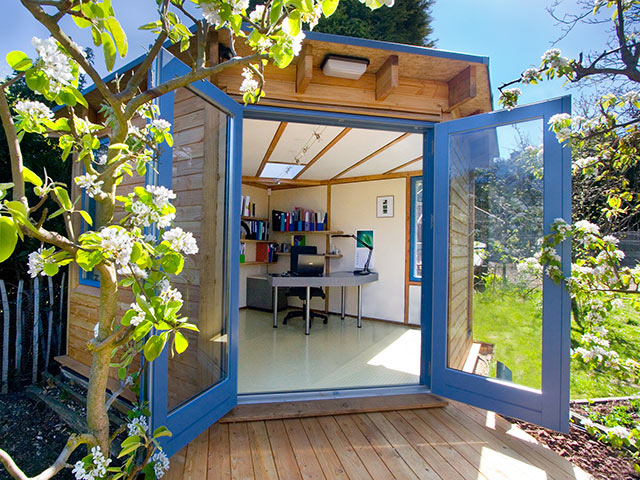Garden rooms: more living space for your home
Should you have a garden that's big enough, it makes sense to put in a garden room - it can be a home office, somewhere to put growing kids, sprightly grandparents or overnight guests, and, of course, a place to escape to. We're approaching 2024 and sheds ain't what they used to be you know
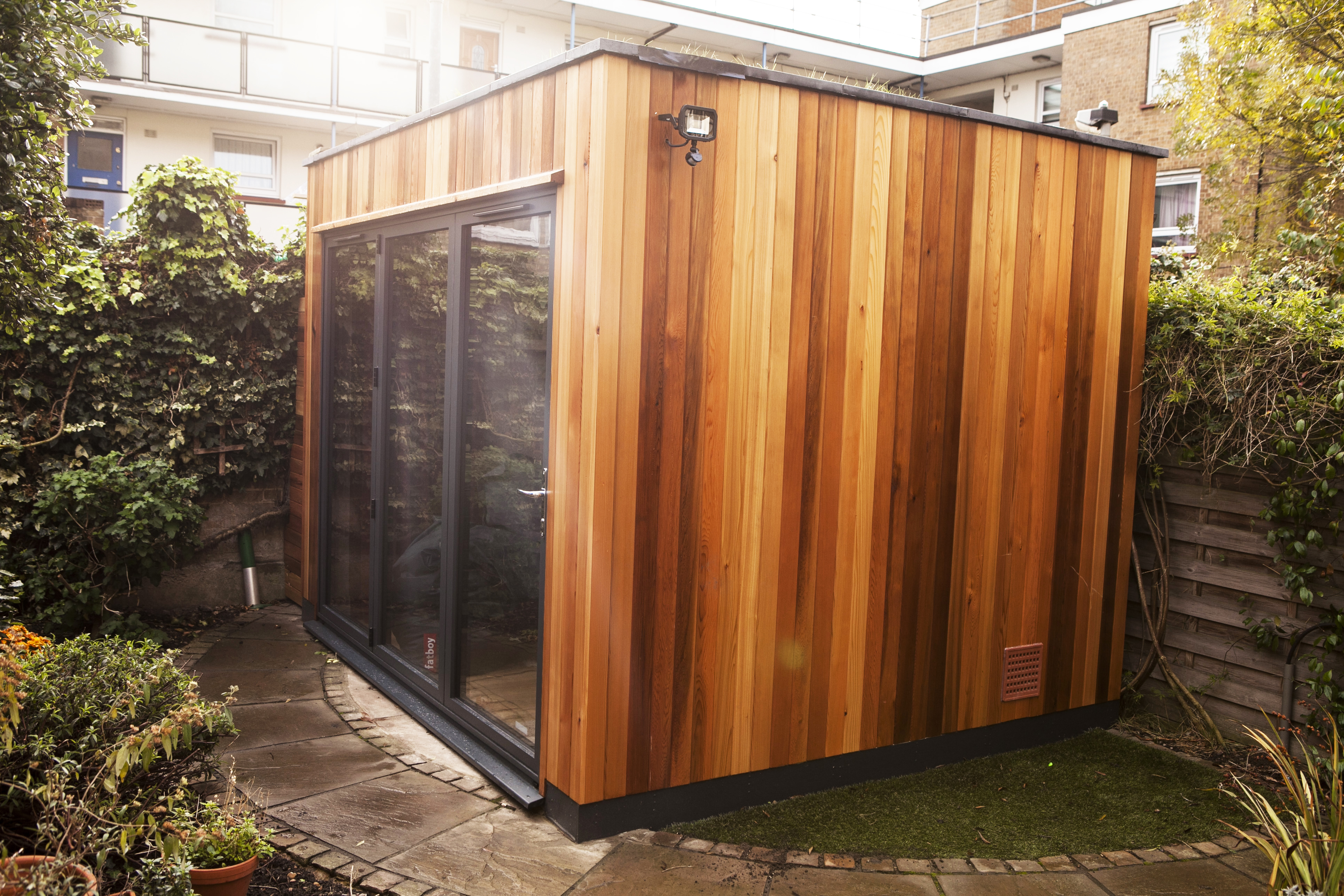
Need a fun space for your teens or a home office? Deco editor Abby Trow commissioned London carpenter and builder TIm Mansfield to build a room in her family's small garden in north London. This delightful room is clad with cedar, has bifolding glass doors, is insulated with sheep's wool, has a wooden floor and a very lush green roof courtesy of Meadowmat. Photo by Mike Trow
Moving house is formidably expensive and building an extension is time-consuming and disruptive. Hence the march of the ready-made garden building to fill the gap, which is a far cry from the humble shed of yesteryear.
You can choose from updated shepherd's huts by designers such as Cath Caesar at Plain Huts to stunning contemporary wood garden buildings from companies such as Rapod Garden Rooms, all of which are extremely well-insulated and so ideal for year-round use.
Or if you're after a quirky one-off, how about a summer house on a rotating base so you can position the front doors to face the sun? Darren Jones at Lichen Garden Antiques has painstakingly restored one such product and can make more if people like them. 'This house sits on the original base and we've rebuilt the building, so to speak, using reclaimed oak and reclaimed limestone panels and it has a hardwood floor. It is heavy, but it's well insulated and you could easily run an electric cable into it so you could have a heater in there in the cooler months.'
The timber roof of the summer house comes off, to make transport easier, but a buyer without direct garden access would need a cherry picker to place it. This charming revolving summer house costs around the £20,000 but Jones is open to negotation. And another thing in its favour is that because it's on a rotating base, it's not a permanent structure and so doesn't need planning permission. (The house measures around 8ftx6ft and is 11ft high to the top of the roof).
'A garden room provides an ideal way of adding space and value to the home without the financial outlay and planning applications associated with traditional extensions,' says Josh Coleman, director of Hudson Garden Rooms. 'For anyone looking to make the most of their outdoor space, it's the ideal solution.'
Gareth Dixon at Oeco Garden Rooms says demand is growing for these type of products: 'A lot of the time it’s because the kids can’t afford to leave home, but we also get requests for them from people who want to use them as music rooms, exercise rooms, granny annexes and so on. Moving house to get an extra room can cost over £100,000 so we offer a quicker, cheaper way of getting extra space.'
Oeco’s modern Cube rooms are made using FSC timber, mainly untreated red cedar, and have insulation made from recycled glass bottles that meets Part L of the building regulations. (Prices from £13,074).
If you like the idea of a Romany caravan or a shepherd's hut as a place in the garden to escape to, talk to Plain Huts in Salisbury. It's taken the most iconic features of the latter and brought it up to date with the latest green technology and a timeless look.
'The original shepherd’s hut was more of a wind break than a room,' says Cath Caesar at Plain Huts.'The roof of ‘wriggly tin’ would have done more to block out the view than the cold, in fact as the breath of the shepherd and animals condensed on the cold metal, water would drip back down onto the bed.. Yet we look at a shepherd’s hut now and see only the romance - nostalgia is a wonderful thing!'
While keeping the traditional shape, including the different sized front and rear wheels, Caesar started reinventing the hut from the bottom up. “The chassis uses the same technology as the originals using oak, steel and cast iron wheels, and it'll last at least 100 years,' she says. 'The FSC-certified cedar cladding requires no additional preservative as it's naturally oily wood; it acts as a layer or insulation and will silver with age and last up to 30 years.'
The huts have Smart System aluminium-framed double-glazing and 50mm insulation so they are warm even in winter: 'The consequence of insulating the hut so well is that it takes VERY little to heat it up,” says Caesar. A composting toilet and solar panels are also available. (Prices from £9,500.)
Tiny House
While big is beautiful for most of us where houses are concerned, the US does have its Tiny House movement.
It hasn't taken off in the same way in the UK, but Mark Burton launched Tiny House UK three years ago after noting the US trend for compact, portable buildings. 'The tiny house movement has been going in the States for 15 years and is big business over there; but the way the Americans do it doesn’t really work over here,' he says.
Burton has designed lightweight sustainable timber tiny houses and he would ultimately like to see them used as student accommodation and starter homes as well as garden buildings.
He offers a version that is plumbed in to utilities and a completely off-grid premium version with a composting toilet, solar panels and tiny log burner/cooker - this model costs around £25,000, while for those wanting a simpler version for the garden he has DIY kits start from £7,000 without the wheeled chassis.
4x3x3 metres
Dr Mike Page at the University Of Hertfordshire set himself the challenge of designing a building with an internal size no bigger than 4x3x3 metres in which two people (who, granted, would have to like each other a LOT....) could live a comfortable, modern existence with minimum impact on the environment.
The Cube Project resulted in a tiny but functional living space that could work for anyone under 6ft tall who's able to climb steep open steps to the bed platform. It can be fitted with a composting toilet, solar panels and an air-source heat pump and costs from £9,495 up to £47,000 depending on the spec.
Inspiration from Scandinavia
Scandinavian influences are apparents in many traditional garden buildings, such as Lillevilla’s seriously cute range of garden rooms, chalets and summerhouses. All are made in Finland by family-run business Luoman from slow-grown sustainable spruce from near the Arctic Circle. Garden rooms start at £3,250 and come in kit form for self-assembly and varnishing.
Also using Scandinavian timber is Nordic Wood, which offers traditional and contemporary designs. The company’s Nordic Rooms also come in kit form, but with added insulation panels and highly insulating windows and doors that take it up to UK building regulations standards – essential if it is going to be used regularly to sleep in. Kits from £8,000.
For super stylish modern design, Rapod creates highly-insulated garden rooms that are popular as home offices. Made from sustainable timber, they sit on four small concrete pads. Prices from around £13,000.
Modern garden rooms are also available from Westbury Garden Rooms, with the added bonus of a natural grass roof if required.
Vivid Green makes garden offices from FSC-certified SIPS (Structurally Insulated Panels) with a sustainable red cedar cladding and the option of recycled plastic roofing.
You can also find plenty of smaller scale ideas to provide a bit of peace and quiet. Small arched pods, sometimes seen on campsites as an alternative to tents, are versatile and popular – Alfresco Arch has moveable open-ended picnic arcs in natural wood from £980; while Midlothian-based Armadilla offers a charming and Building Regs- double-skinned and insulated arch-shaped pod, from £8,300.
How eco is your garden room?
The most common building material for garden rooms is timber, so question number one always has to be about sustainability. Is it plantation grown? Is it FSC or PEFC Certified? Has it been shipped half-way around the world? In general the answer is likely to be positive – Northern European woods like Scandinavian Redwood (a tough, red-wooded type of pine, not related to the US giant redwood) tend to be common, along with various cedars, firs and European oak, all of which are likely to be plantation grown under strict conditions.
While log cabins that look like they are made of lots of round logs, Pioneer-style, have an extra dose of rustic charm, it’s worth considering that there is a lot more wastage of timber involved in creating round posts than in narrow slats that use up more of the whole tree.
If left untreated, many timbers will rapidly begin to rot in our climate, so the next question to ask should be about preservatives.
Some European woods such as oak, red cedar and larch are naturally durable so may be used untreated, although they will weather and change colour with time. Other woods will need extra treatments. GreenSpec, eco advisory body for the construction industry, recommends: “If you have to use preservatives, use Boron-based compounds. Boron compounds are well-known, non-toxic preservatives that are water-soluble.'
Another alternative is Kebony, softwood that has been treated with a natural alcohol produced from crop waste, giving it the toughness and durability of natural hardwoods such as teak.
Depending on how you plan to use the room, insulation is an important consideration to avoid energy wastage through needing air-conditioning or heating. If you just want a room to relax in during the summer months it may not be necessary, but if you plan to use it all year around then Building Regulation standard air-tightness and insulation will ensure it is comfortable whatever the weather.
Do I need planning permission?
When it comes to PP, nothing is simple as different rules can apply from one street to the next. You can find some official government guidelines here www.planningportal.gov.uk/permission/commonprojects/outbuildings/
Generally speaking, if your garden room is movable (on wheels, freestanding etc) and not used as living accommodation, then few restrictions apply.
If it is more permanent it may still be “permitted development” that doesn’t need permission as long as it is “for a purpose incidental to the enjoyment of the dwelling house”, not in front of your house, doesn’t take up more than half of the garden space and is less than 2.5m high if it is within 2m of the boundary and less than 4m high elsewhere.
If it is to be used as someone’s home, or as a holiday let then it will almost certainly require planning permission. Garden rooms of any kind that have designated sleeping accommodation also require Building Regulations.
Read more: Furniture designer Harry Villiers' bespoke shed
